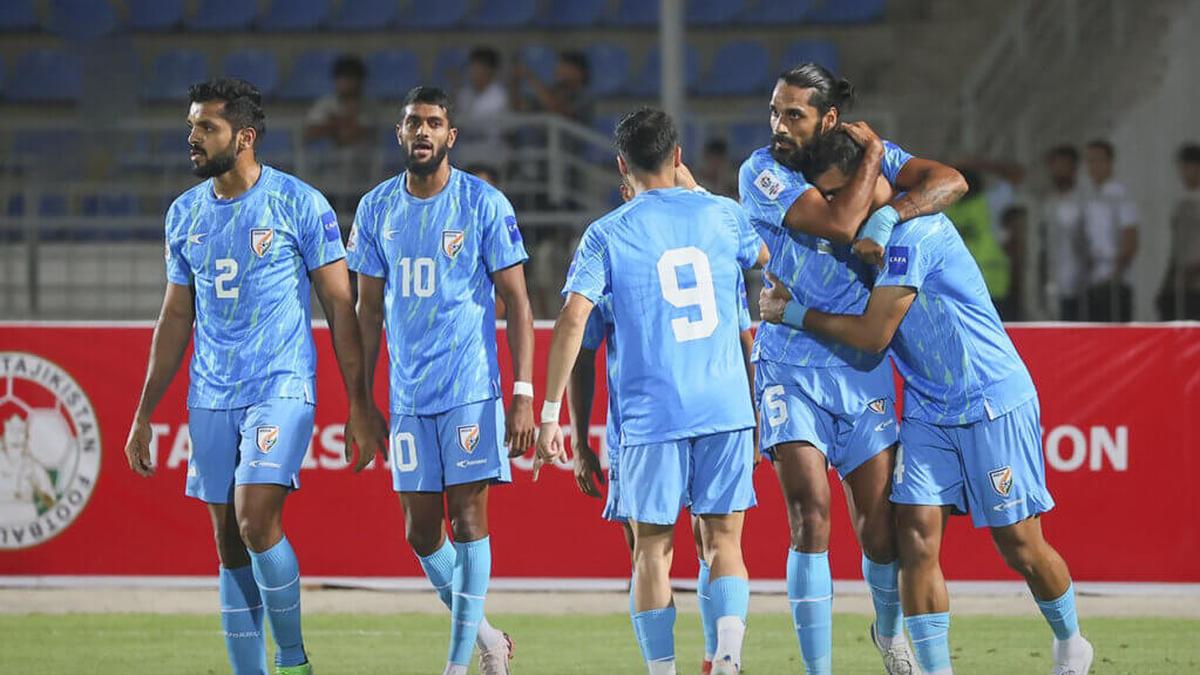
In a tense and tactical encounter at the Hisor Central Stadium in Tajikistan, India and Afghanistan battled to a goalless draw in their final Group B match of the 2025 CAFA Nations Cup. While the scoreboard remained unchanged, the match was anything but dull, with both sides creating chances, testing goalkeepers, and pushing for a result that could shape their tournament fate.
For India, the draw keeps hopes alive for a spot in the third-place playoff, contingent on the outcome of the Iran vs Tajikistan fixture. Afghanistan, meanwhile, exits the tournament after failing to register a win in the group stage.
High Stakes and Tactical Shifts
Heading into the match, India had three points from two games—having beaten Tajikistan 2-1 and lost 0-3 to Iran. Afghanistan, on the other hand, had suffered defeats in both their previous outings. With Iran expected to dominate Tajikistan, India knew that even a draw could be enough to secure second place in the group and a berth in the third-place match.
Coach Khalid Jamil opted for a cautious but flexible approach, starting with a 4-2-3-1 formation that allowed quick transitions. Afghanistan, under Vincenzo Alberto Annese, came out with intent, pressing high and looking to exploit India’s defensive vulnerabilities.
First-Half Highlights: Missed Chances and Defensive Grit
The opening exchanges saw Afghanistan take the initiative, with Ali Reza Panahi testing Gurpreet Singh Sandhu early with a long-range effort that required a sharp save. India responded with counterattacks, and Ashique Kuruniyan was a constant threat down the left flank. In the 15th minute, Ashique broke through and squared the ball to Irfan Yadwad, whose shot missed the target by inches.
India’s best chance of the half came in the 34th minute when Ashique stole the ball inside the Afghan box and found himself one-on-one with goalkeeper Faisal Ahmad Hamidi. Hamidi smothered the ball bravely, and Ashique was booked for colliding with the keeper in the process.
Jithin MS, making his first start for India, impressed with his agility and creativity. Just before halftime, he fired a half-volley from the edge of the box that sailed narrowly over the crossbar. Despite India’s dominance in possession and chances, the teams went into the break locked at 0-0.
Second Half: Substitutions and Strategic Adjustments
The second half saw India take greater control of the midfield. Khalid Jamil introduced Manvir Singh Jr. and Vikram Partap Singh to inject pace and fresh legs into the attack. Nikhil Prabhu, playing in a deep-lying playmaker role, nearly unlocked the Afghan defense with a clever outside-foot pass to Jithin, but the ball was just out of reach.
Afghanistan relied on set pieces and long balls to create danger. In the 71st minute, a powerful drive from an Afghan forward whistled past the post, sending a scare through the Indian defense. Gurpreet remained alert, coming off his line to intercept through balls and command his area with authority.
India’s long-ball strategy continued, with Vikram and Manvir trying to latch onto aerial deliveries. Danish Farooq and Udanta Singh were brought on late to add energy and width, but the final ball often lacked precision.
Defensive Discipline and Goalkeeping Heroics
Both goalkeepers were standout performers. Gurpreet Singh Sandhu made multiple saves and showed excellent positioning, while Faisal Ahmad Hamidi’s reflexes kept Afghanistan in the game. The defenders on both sides were resolute, with Rahul Bheke and Mahboob Hanifi making crucial clearances and interceptions.
Sandesh Jhingan’s absence due to injury was felt, but India’s backline held firm. The midfield duo of Mahesh and Suresh Wangjam provided cover and distribution, helping India maintain shape and composure under pressure.
Tournament Implications
With the draw, India finishes the group stage with four points from three matches. Their progression to the third-place match now hinges on Iran’s result against Tajikistan. If Iran wins or draws, India will secure second place in Group B. If Tajikistan wins, they will leapfrog India on goal difference, knocking the Blue Tigers out of the tournament.
Afghanistan ends their campaign with a solitary point and will look to regroup ahead of upcoming qualifiers. Despite their exit, the team showed flashes of promise and resilience, particularly in defense and midfield.
A New Era Under Khalid Jamil
This tournament marks the beginning of a new chapter for Indian football under head coach Khalid Jamil. His tactical flexibility, emphasis on youth, and ability to adapt mid-game have been evident throughout the CAFA Nations Cup. The win against Tajikistan was India’s first competitive victory since November 2023, and the draw against Afghanistan, while frustrating, showcased the team’s growing maturity.
Jamil’s decision to rotate players and give opportunities to emerging talents like Jithin MS and Irfan Yadwad reflects a long-term vision. The team’s defensive organization and counterattacking potential have improved, though finishing remains an area for development.
Final Thoughts
India’s goalless draw with Afghanistan may not have delivered fireworks, but it was a match filled with tension, tactical nuance, and individual brilliance. Both teams fought hard, and while the result leaves India’s fate hanging in the balance, it also highlights the progress made under new leadership.
As fans await the outcome of the Iran vs Tajikistan clash, one thing is clear: India’s performance in the CAFA Nations Cup has laid the groundwork for a more competitive and cohesive future. Whether they advance or not, the lessons learned and the experience gained will serve them well in the road ahead.


Leave a Reply